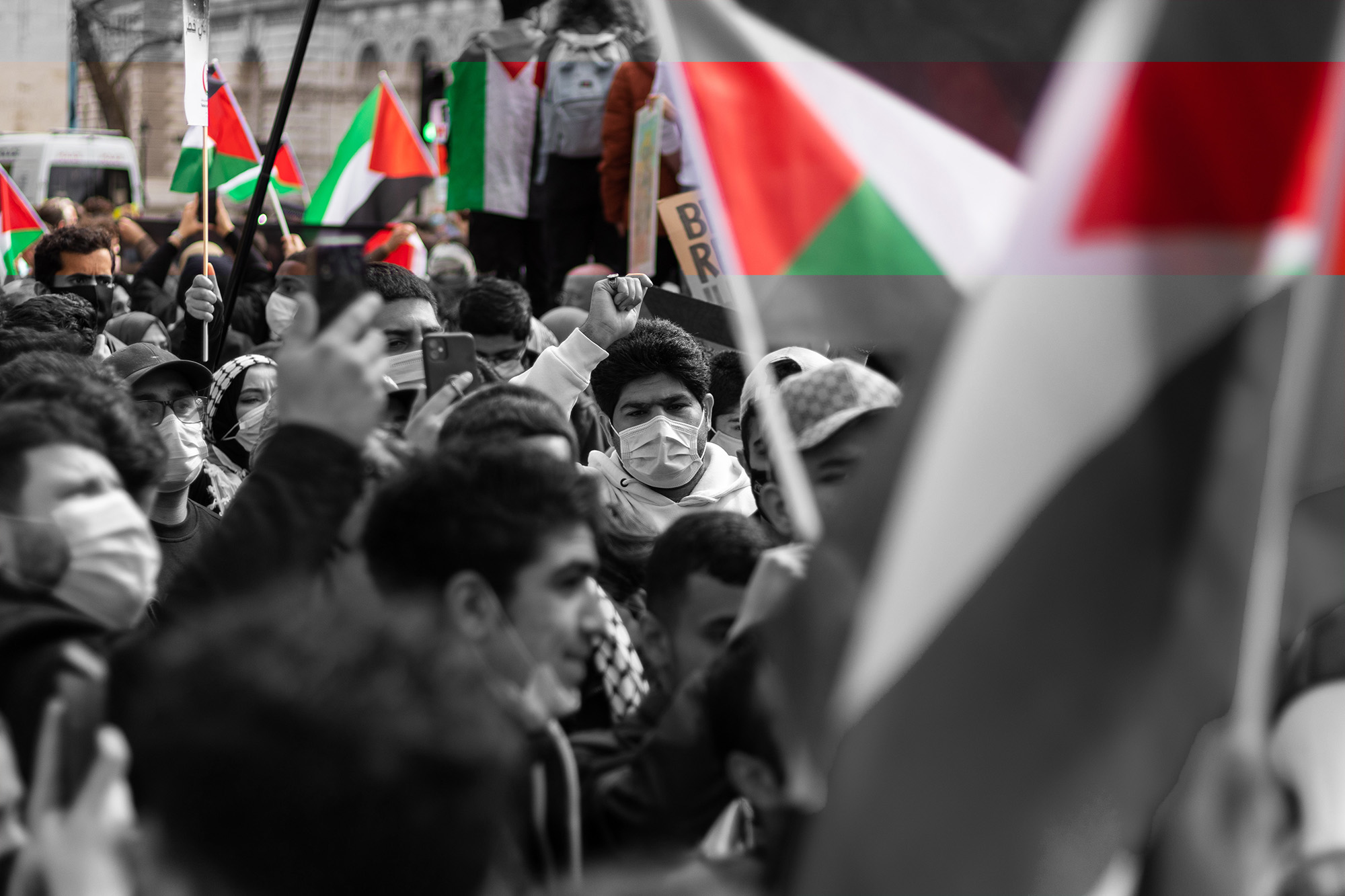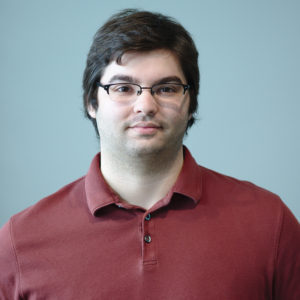Photo by Yousef Salhamoud on Unsplash
Before tensions escalated to the point of explosion in May 2021, New Voices Correspondent Daniel Crasnow attended a Pro-Palestinian protest for police accountability the month prior. Here is a story of one of the many day-to-day demonstrations happening across Israel and Palestine in the moments before the current crescendo following the evictions in Sheikh Jarrah. This article is part of the ongoing “Diaspora English” series, as Daniel Crasnow reports on a year spent teaching English as an American Jew in Israel and Palestine during the coronavirus pandemic. You can read other Diaspora English articles here.
_______________________________________________________
The protest took place at a shopping mall a few miles outside of Nazareth. I arrived with an activist friend of mine, Shareef, who I met through another member of my teaching program. He invited me to tag along and see what the life of Israeli protest is like. We met up with some fellow activists, all of whom are a part of Standing Together, a self-described Jewish-Arab Grassroots Movement based in Israel working to peacefully end the occupation among other causes. These include economic equality for the Arab population, repealing Israel’s controversial Nation-State Law, forcing certain anti-Arab politicians out of the government, and working to heal the strained relationship between Israeli Jews and Israeli Arabs. Of the activists we met up with, most were actually left wing Israelis who cared about the fate of Palestine.
Shareef, a young Muslim Palestinian who “found himself holding a blue document that says he is not Palestinian” is a social activist and political organizer whose community work focuses on Standing Together and coexistence. He’s ardently Anti-Zionist, believes in one, social, democratic state as the only possible just end to the conflict, and is inspired by the Pan-Arab movement.
The day’s march was focused on the police forces in two particular directions: police accountability and police brutality. In the Arab-Israeli community violence is extensively under-investigated, including numerous murders in which cases have been opened, but never closed. People are rarely accused, much less arrested and prosecuted. This led to a series of protests that garnered violent police responses, including against the Mayor of Umm Al-Fahm, one of the largest Arab-majority cities, and against another Arab Parliament Member.
Shareef told me that ours was a smaller protest. Those in Tel Aviv and outside of Netanyahu’s residence in Jerusalem gather tens of thousands of protesters compared to the few hundred who were here. With a smile, he promised to make sure I stayed safe and out of trouble; a promise I said I’d hold him to.
The protest began after the noon call to prayer. While children dodged in and out of the raggedy prayer lines, fifty people bowed on the grass, their black, red, and green flags temporarily put aside. Those who didn’t pray took care of the signs and kids. There were dozens of children running around.
The protest began with a series of chants and honking car horns as passerby drove on. Then, we marched around a block of houses as Israeli police littered the nearby rooftops, cameras flashing and rifles casually drawn. I pulled the hood of my jacket farther over my face, and realized that the black and white checkered jacket would be identifiable regardless of what I did. I’m not completely new to the world of protesting, but in America, I was well aware of my skin color and my citizenship, which grants me both privileges and rights. Here, I am in a foreign country, and working on the government’s dime, with their visa. I found myself much more aware of what the Israeli government might do to me, if they wanted to; a factor that I had taken for granted in America.
Finally, we made it to the main road, flooded with chants and waving flags. Beside me, women, mostly mothers, lined up with posters of the people they lost as journalists across the street snapped photographs. They bowed their heads for a minute, and then broke apart. Volunteers in yellow vests guided cars through the mess as people continued about their daily shopping, separating protestors from the police. Kids continued to weave through the arrangement, running back and forth as they chased after people they knew, sometimes chanting or holding signs themselves, other times, off in one direction or another.
An Israeli ambulance with the star of David clearly displayed hurried by, sirens blazing, and a protestor chased after it. He missed it at first, but when it circled around again, he successfully flagged it down as a teenage girl, sniffling in pain as she held onto the shoulders of the people helping her, her foot bent at an abnormal angle, hobbled over and climbed into the back. The ambulance hurried away as the chants continued.
On either side of this small valley, at the top of the hill and the shopping complex, police and bystanders watched, distant but ever-present. They were on the hill, beside us in the shopping center, in cars and on the sidewalk, stopping, watching, snapping photographs, and hurrying on.
One man held an “Arab Lives Matter” sign colored the red, green, and black of the Palestinian flag. Though he began the protest near me, as the chanting continued, he ended up behind the main organizer, chanting along, sign held high.
The march took a left turn, and continued down the road, and back to our original location in front of an old administrative building. And then, suddenly, the tension ramped up.
As we walked back to this original intersection, a series of shouts rippled through the crowd as some of the volunteers in yellow vests rushed forward and up the small hill where we had walked earlier as the main protest settled back into the original location. Shareef stood straighter and followed the volunteers with his eyes as they ran forward. He shouted, “Nonviolence guys! No violence!” as he and the other organizers gathered together in a jumble of conversation that I couldn’t understand.
I could sense the tone change, so I asked Shareef to fill me in on the details. He didn’t say anything at first. But as the main protest resumed its chants and as the situation resolved, I learned that some police and protesters were in a standoff up the hill ahead, but the yellow-vested volunteers formed a human wall that separated the groups and the situation resolved peacefully. “Some of this stuff doesn’t,” Shareef said to me.
He pulled up a video on his phone of what looked like a figure flanked by some highly armored forces with riot shields. The forces charged forward, and knocked the figure over, who went sliding a few feet as smoke continued to obscure the background. In the next photo, a middle-aged man sat on a chair, surrounded by medical equipment, with a stream of blood from his forehead, just above his right eye, dripping down his cheek to his chin. “The Israeli forces are brutal,” Shareef said with a small laugh.
As the protest drew to a close, Shareef and his activist friends took a series of photos, no doubt for social media. I kept well away from the camera, as I had been doing all afternoon. Though I stood behind the camera for a few photos for Standing Together and took even more photos for myself, I refused to be in any of them. The last thing I wanted was for my employers at BINA, who receive monetary assistance from the Israeli Government, all of whom are Israelis who have served in the military (as most Israelis do) to be hurt by me having attended a protest like this.
Shareef said he’d make an activist out of me yet, and offered to take me to another protest, whenever one was scheduled. “This one was pretty boring,” he said, “you haven’t seen the story-worthy stuff yet.”

